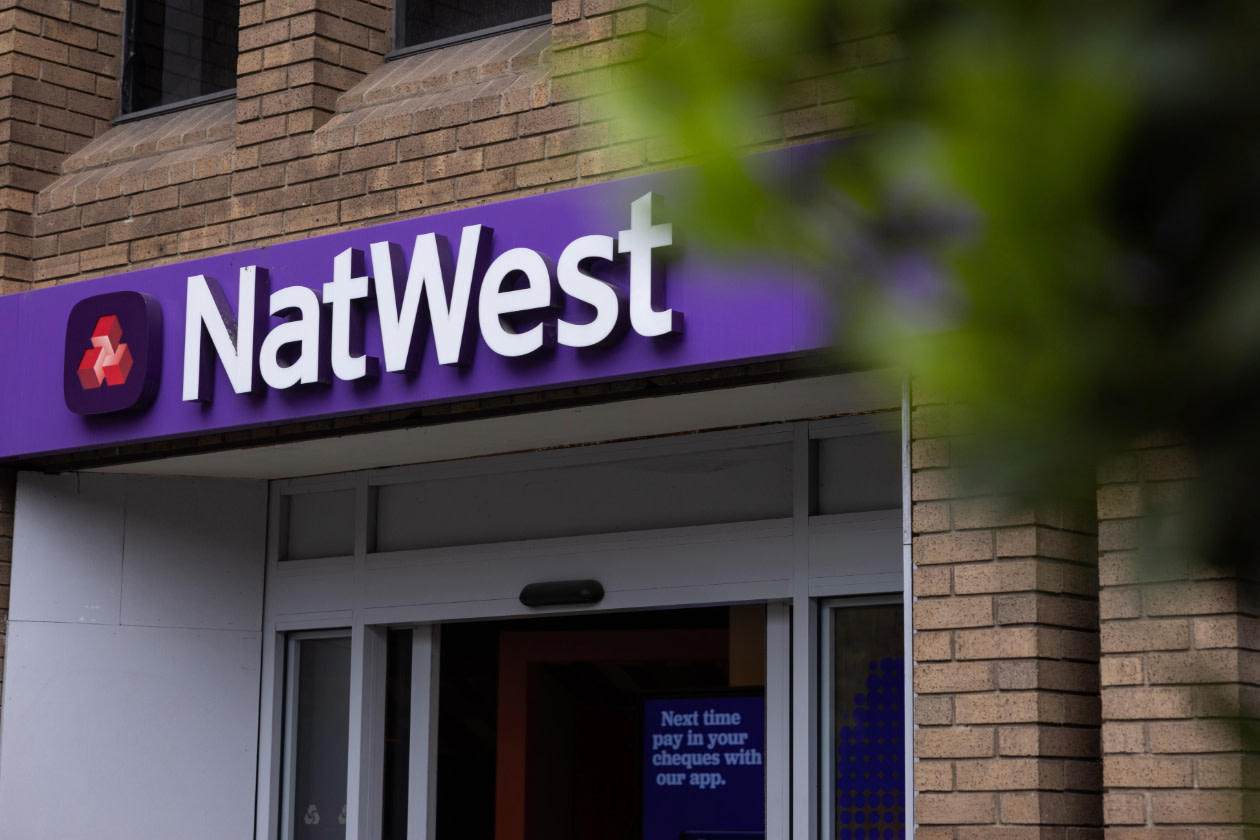NatWest reported second-quarter income of £4.0bn (£4.0bn expected), up 9.5%, driven mainly by growth in net interest income. Net interest margin rose from 2.10% to 2.28%.
Operating profit rose 4.4% to £1.8bn (£1.6bn expected), driven by top-line growth and relatively flat costs. Impairments were better than expected, and default levels remain low.
The group’s CET1 ratio, a key measure of financial strength, was 13.6% at the period end (13-14% target range).
Full year income, excluding one-off items, is now expected to land above £16.0bn (£16.0bn expected).
An interim dividend of 9.5p was announced, up 58%, alongside a £750mn share buyback.
The shares rose 1.8% in early trading.
Our view
NatWest is quickly becoming a dependable name again, and first half results were an easy read. There’s wind in the sails, and while managements cautious approach is commendable, we think now’s the time to make some more aggressive moves.
As a traditional lender, loan default rates are an important risk to watch for. The good news for investors is that borrowers are remaining resilient, with default rates staying at low levels and expected to stay on that trend.
Mortgage growth was strong over the half as buyers got in ahead of stamp duty changes. We see scope for continued good demand over the course of the year, if rates come down as expected. There’s no longer a material margin headwind on mortgages either, which should be positive for interest income.
Deposits make up the other side of the equation, and the trend of savers looking for longer term accounts was a drag in the early parts of 2024. Those higher-rate accounts essentially cost more for NatWest to run, but things are a lot more stable now. That's good news for margins - something for investors to monitor.
Costs are a key focus and we've been pleased to see continued progress on this front - medium-term targets look for sub 50% cost-income ratio (H1: 48.8%). This is a key area that NatWest needs to continue to execute on.
There's also the benefit of the structural hedge - think of this as a bond portfolio that's set to roll on to better rates over the coming years. NatWest is rolling off some of the lowest rates in the sector, and should be one of the biggest beneficiaries. This effect should continue for the coming years, even if we see further rate cuts, assuming there are no major surprises.
Now that the government no longer has a stake in the business, we would like to think it frees up some wiggle room to take a little risk. The balance sheet is in very good shape, and we think management could comfortably release some extra capital to chase growth or simply return cash to shareholders.
We see NatWest as one of the best-placed UK banks to benefit from several sector tailwinds. Sentiment has rightly improved over the past year after a lengthy period at depressed levels. We think that’s justified and see scope for continued growth, but there’s more pressure to deliver than in a long time and nothing is guaranteed.
Environmental, Social and governance (ESG) risk
The financials sector is medium-risk in terms of ESG. Product governance is the largest risk for most companies, especially those in the US and Europe with enhanced regulatory scrutiny. Data privacy and security are also an increasingly important risk for banks and diversified financial firms. Business ethics, ESG integration and labour relations are also worth monitoring.
According to Sustainalytics, NatWest’s management of material ESG issues is strong.
NatWest is resolving some longstanding issues but still faces legal challenges and subpar money laundering policies. Its product management lacks detail and oversight, posing risks under new consumer protection laws. Although there are gaps in data privacy and security, NatWest effectively mitigates cyber threats.
NatWest key facts
All ratios are sourced from LSEG Datastream, based on previous day’s closing values. Please remember yields are variable and not a reliable indicator of future income. Keep in mind key figures shouldn’t be looked at on their own – it’s important to understand the big picture.
This article is not advice or a recommendation to buy, sell or hold any investment.No view is given on the present or future value or price of any investment, and investors should form their own view on any proposed investment.This article has not been prepared in accordance with legal requirements designed to promote the independence of investment research and is considered a marketing communication.Non - independent research is not subject to FCA rules prohibiting dealing ahead of research, however HL has put controls in place(including dealing restrictions, physical and information barriers) to manage potential conflicts of interest presented by such dealing.Please see our full non - independent research disclosure for more information.


